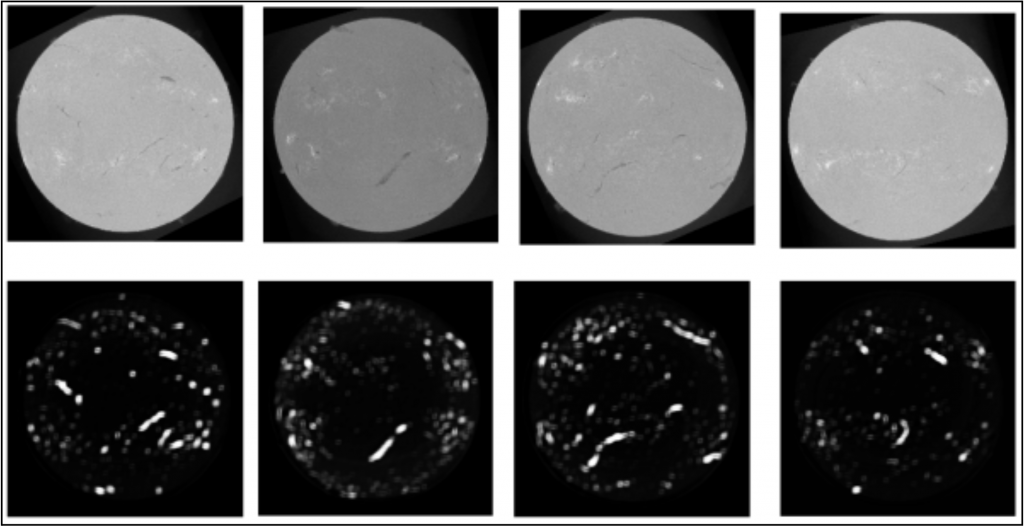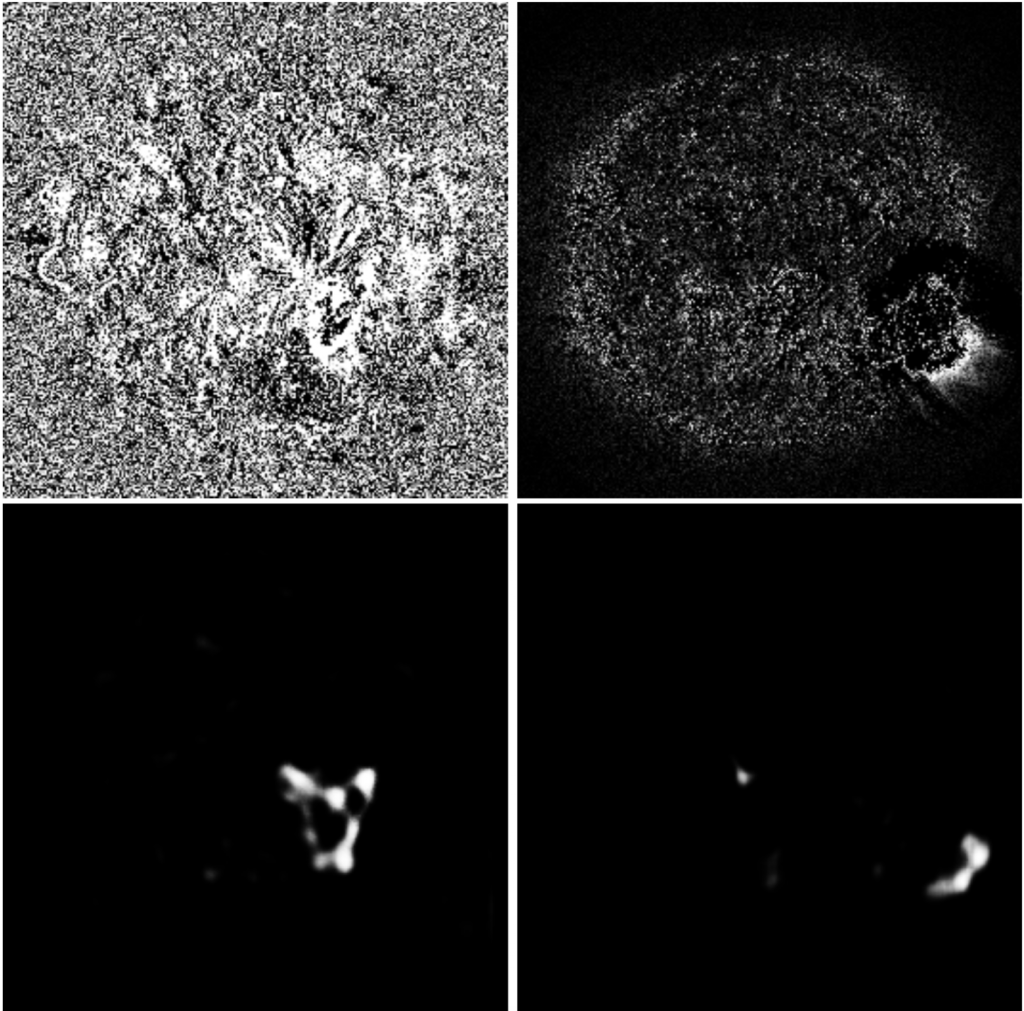Recently, we have extended our deep learning approach to tracking solar features and applied it to on-disk solar filaments in EUV and visible light observations. The first model we developed was trained on 1500 H-alpha solar images from the Kanzelhöhe Observatory of the University of Graz in Austria, obtained as part of an on-going collaboration. Ground-truth masks in this case were provided by the observatory archive. Preliminary tests show good model performance, achieving an Intersection-Over-Union (IOU) metric value of up to 0.76 on the validation set. Figure 1 shows an example of the model results in the form of binary feature masks. The masks show clearly the great performance of the model, which detects not only large and high-contrast filaments, but also fainter and smaller ones. This model is being further refined, and will be applied in near-real time to Kanzelhöhe synoptic solar observations, as well as to our own solar observations in the near future. It will be part of our future autonomous space weather monitoring capability.

The second model was trained on a very limited dataset consisting of approximately 100 running-difference SDO/AIA 193-Angstrom channel images, with extensive geometric data augmentation. The ground truth masks were obtained by applying our wavelet-based Wavetrack code to SDO/AIA running difference data. Performance on the validation set appears promising, with the model able to distinguish between large on-disk filaments in very noisy surroundings and small off-limb structures (Fig. 2). More training rounds on a more diverse dataset are being performed on the model before it can be reliably applied to case studies.

